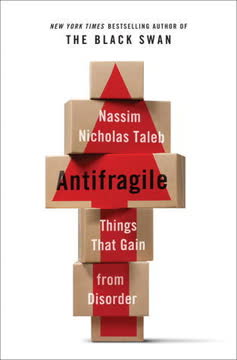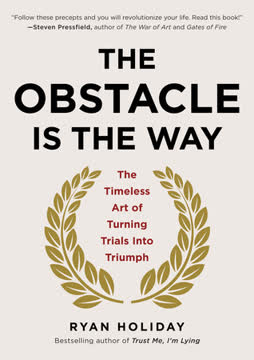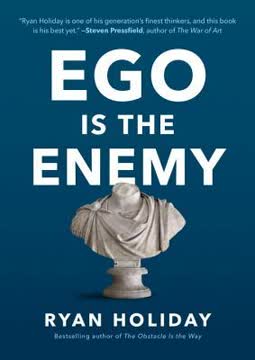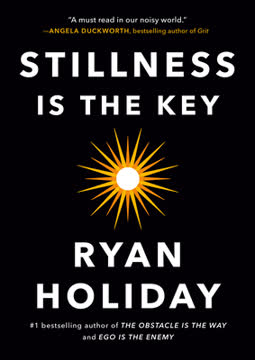つの重要なポイント
1. レジリエンスは生まれつきの特性ではなく、学べるスキルである
研究によれば、レジリエンスは普通のスキルとリソースを含む正常なものである。
レジリエンスの定義。 レジリエンスとは、逆境、ストレス、挑戦に適応し、うまく対処する能力のことです。困難な感情や経験を避けるのではなく、心理的な柔軟性を維持し、挫折にもかかわらず価値のある目標を追求し続けることです。
レジリエンスの構成要素。 レジリエンスの主要な構成要素には以下が含まれます:
- 自己認識
- 感情の調整
- 楽観主義
- 問題解決能力
- 強い社会的つながり
- 目的意識
レジリエンスの育成。 レジリエンスは以下の方法で育成できます:
- マインドフルネスと受容の実践
- 個人の価値観の明確化
- 問題解決技術の習得
- 社会的支援ネットワークの構築
- リラクゼーションエクササイズの実施
- 否定的な思考パターンに挑戦する
2. ストレス管理にはマインドフルネスと受容が鍵である
皮肉なことに、苦痛を受け入れると、それは自然で優雅な方法で減少するように見える。
マインドフルネスの実践。 マインドフルネスは、判断せずに現在の瞬間に注意を払うことです。これによりストレスが軽減されます:
- 思考や感情の認識を高める
- 反芻や心配を減少させる
- 感情の調整を強化する
- 集中力と注意力を向上させる
受容の戦略。 受容は諦めではなく、思考や感情を変えようとせずに経験する意欲を意味します。このアプローチは:
- 不快な経験との闘いを減少させる
- 感情が自然に流れるのを許す
- 問題解決や価値のある行動に精神的エネルギーを解放する
3. 個人の価値観を明確にして意思決定と行動を導く
レジリエンスを持つということは、痛みや不安などの不快な経験に直面しても、個人の価値観に従い続けることを意味し、揺らいだときには再びその価値観に戻ることです。
価値観の特定。 価値観は、人生で最も重要なものを反映する指針です。目標とは異なり、価値観は終点ではなく継続的な方向性を示します。例としては:
- 誠実さ
- 思いやり
- 成長
- 創造性
- つながり
価値観に従って生きる。 行動を個人の価値観に合わせることは:
- 目的と意味を提供する
- 動機とコミットメントを高める
- 困難な状況での意思決定を改善する
- 全体的な生活満足度を向上させる
4. 問題解決能力は挑戦への適応力を高める
問題解決は確立された方法論的アプローチであり、認知行動療法の一形態であり、広範な問題に対して効果的であることが研究で示されています。
問題解決のステップ:
- 問題を明確に定義する
- 複数の潜在的な解決策を生成する
- 各オプションの利点と欠点を評価する
- 最良の解決策を選択し実行する
- 結果をレビューし、必要に応じて調整する
効果的な問題解決の利点:
- 挑戦に対処する自信を高める
- ストレスと不安を減少させる
- 意思決定能力を向上させる
- 全体的なレジリエンスと適応力を強化する
5. 社会的支援とアサーティブネスは感情的レジリエンスに寄与する
レジリエンスに関する研究は、一貫して適切な社会的支援源の重要性を指摘しています。例えば、友人や家族からの感情的支援や励ましなどです。
社会的支援の構築。 強い社会的つながりはレジリエンスにとって重要です。社会的支援を強化するための戦略には以下が含まれます:
- 既存の関係を育む
- 共通の関心を持つグループやコミュニティに参加する
- ボランティア活動や地域活動に参加する
- 必要に応じて専門的な支援を求める
アサーティブネスの発展。 アサーティブネスは、自分のニーズ、意見、感情を効果的に表現しながら他者の権利を尊重することです。主要なアサーティブネススキルには以下が含まれます:
- 「私」メッセージの使用
- 明確な境界の設定
- 必要に応じて「ノー」と言う
- 敬意を持って異議を表明する
- 必要なものや欲しいものを要求する
6. 漸進的なリラクゼーション技術は身体的および精神的緊張を軽減する
生理学的観点から「リラクゼーション」とは、ジェイコブソンが定義したように、筋肉の収縮や「緊張」の完全な不在、すなわち筋繊維の解放と伸長を意味します。
漸進的筋弛緩法(PMR)。 この技術は、異なる筋肉群を体系的に緊張させてからリラックスさせることで深いリラクゼーションを達成します。利点には以下が含まれます:
- 身体的緊張の軽減
- 不安とストレスの減少
- 睡眠の質の向上
- 身体意識の向上
PMRの実践:
- 快適な姿勢を見つける
- 特定の筋肉群に集中する
- 筋肉を5-10秒間緊張させる
- 緊張を解放し、リラクゼーションの感覚に集中する
- 次の筋肉群に移る
- 体全体でこのプロセスを繰り返す
7. 心配の延期は不安の管理に効果的である
心配の延期は、前述のマインドフルネスと受容に基づく戦略と統合されており、特に現在の瞬間に「集中」し、内在的に価値のある行動に「従事」することに関連しています。
心配の理解。 心配は、将来の否定的な結果に焦点を当てた思考の連鎖です。ある程度の心配は生産的ですが、過度の心配は不安とストレスを引き起こします。
心配の延期の実施:
- 心配の思考を特定する
- 毎日特定の「心配時間」を設定する
- この時間外に心配が生じた場合、それを認識し、指定された心配時間まで延期する
- 心配時間中に、懸念を建設的に対処するか、問題解決技術を使用する
心配の延期の利点:
- 心配に費やす全体的な時間を減少させる
- 現在の瞬間への意識を高める
- 現在のタスクに集中する能力を向上させる
- 全体的な感情的な幸福を向上させる
8. ストア派の哲学はレジリエンスを築くための時代を超えた知恵を提供する
では、何をすべきか?自分の力でできることを最大限に活用し、残りは自然に任せることです。
レジリエンスのための主要なストア派の原則:
- 自分のコントロール内にあることに焦点を当てる
- 変えられないことを受け入れる
- 美徳と知恵を育む
- 自制心と節度を実践する
- 挑戦を成長の機会として受け入れる
ストア派の知恵の適用:
- 非合理的な信念に挑戦するために合理的な思考を使用する
- ネガティブな視覚化を実践して、持っているものを感謝する
- 自分の行動を反省し、経験から学ぶ
- 個人的な欲望を超えた義務感と目的意識を育む
- 逆境に直面しても感情の平静を保つ
最終更新日:
FAQ
What is "Build Your Resilience" by Donald J. Robertson about?
- Focus on psychological resilience: The book explores how ordinary people can adapt and cope well with adversity by developing skills like problem-solving, emotional regulation, and social competence.
- Integrative approach: Donald J. Robertson combines evidence-based cognitive-behavioural therapy (CBT) with modern mindfulness and acceptance-based therapies, especially Acceptance and Commitment Therapy (ACT).
- Practical self-help guide: Readers are provided with a step-by-step plan to build resilience, emphasizing values clarification, acceptance, mindfulness, relaxation, and social skills for thriving in any situation.
Why should I read "Build Your Resilience" by Donald J. Robertson?
- Preventative and general wellbeing: The book aims to enhance resilience for both current and future adversities, improving overall quality of life rather than just fixing specific problems.
- Evidence-based strategies: It draws on well-researched psychological therapies, including CBT, ACT, and relaxation training, ensuring scientifically supported advice.
- Holistic and accessible: Robertson integrates ancient Stoic philosophy with modern psychology, making the content practical and relevant for everyday challenges.
What are the key takeaways and focus points from "Build Your Resilience" by Donald J. Robertson?
- Skill acquisition and practice: Building resilience is likened to learning a physical skill, requiring systematic practice of techniques like Progressive and Applied Relaxation, worry postponement, and assertiveness.
- Mindfulness and acceptance: Central themes include accepting internal experiences, practicing cognitive defusion, and cultivating present-moment awareness to reduce unhelpful emotional reactions.
- Philosophical integration: Stoicism is presented as a timeless framework, emphasizing control over actions, acceptance of external events, and living in accordance with personal values.
How does Donald J. Robertson define psychological resilience in "Build Your Resilience"?
- Positive adaptation: Resilience is described as “patterns of positive adaptation during or following significant adversity,” relying on everyday skills like problem-solving and emotional regulation.
- Commitment to values: Robertson frames resilience as the ability to remain committed to one’s core values despite setbacks, rather than simply eliminating distress.
- Dynamic process: Resilience is seen as an ongoing, flexible process of coping well and bouncing back, not about being perfect or emotion-free.
What are the main risk and protective factors for resilience according to "Build Your Resilience"?
- Risk factors: These include childhood developmental issues, daily hassles, major setbacks (like bereavement or illness), and the stress of seeking greater meaning or purpose.
- Protective factors: Social support from family, friends, and community is highlighted as the most consistent protective factor, along with self-acceptance, confidence, and emotional regulation.
- Experiential avoidance: Attempts to control or avoid unpleasant internal experiences often backfire, increasing distress and reducing resilience.
What is experiential avoidance and why is it important in "Build Your Resilience" by Donald J. Robertson?
- Definition: Experiential avoidance is the unhelpful effort to suppress, control, or avoid unpleasant thoughts, feelings, or memories—a core concept in ACT.
- Counterproductive effects: Trying to avoid or control internal experiences often worsens emotional suffering and interferes with living according to values.
- Creative hopelessness: The book encourages letting go of futile control efforts and instead cultivating psychological flexibility through mindful acceptance and valued action.
How does "Build Your Resilience" by Donald J. Robertson explain values clarification and its role in resilience?
- Values as life directions: Values are described as ongoing, intrinsic life directions (e.g., “acting with integrity”) that guide actions, not just specific goals.
- Distinction from goals: Values provide meaning and motivation, while goals are specific, achievable outcomes that serve those values.
- Foundation for resilience: Clarifying values helps define what resilience means personally and motivates individuals to face emotional challenges.
What does "Build Your Resilience" by Donald J. Robertson say about commitment to valued action?
- Central to resilience: Acting according to core values despite internal barriers is presented as the essence of emotional resilience.
- Goal-setting and planning: The book recommends setting SMART goals (Specific, Measurable, Achievable, Relevant, Time-limited) aligned with values and scheduling value-driven activities.
- Overcoming barriers: It distinguishes between external (practical) and internal (psychological) barriers, suggesting problem-solving for the former and mindfulness/acceptance for the latter.
What are acceptance and cognitive defusion, and how do they contribute to resilience in "Build Your Resilience"?
- Acceptance: Willingness to fully experience unpleasant thoughts and feelings without struggling against them, in service of valued living.
- Cognitive defusion: Techniques for seeing thoughts as mental events rather than literal truths, reducing their emotional impact (e.g., labeling thoughts, imagining them as leaves on a stream).
- Psychological flexibility: Together, acceptance and defusion foster an “open” response style, increasing flexibility and enabling value-driven action despite internal challenges.
How does "Build Your Resilience" by Donald J. Robertson describe mindfulness and its role in resilience?
- Mindfulness as ‘centred’ responding: Mindfulness involves present-moment awareness and adopting the perspective of self-as-observer, complementing acceptance and defusion.
- Reducing rumination and worry: Mindfulness helps limit unproductive rumination about the past and worry about the future, common in anxiety and depression.
- Practical exercises: The book includes mindfulness practices like mindful eating, body scans, and brief meditations to cultivate awareness and flexibility in daily life.
What is Progressive Relaxation and how is it used in "Build Your Resilience" by Donald J. Robertson?
- Scientific muscle relaxation: Progressive Relaxation (PR) involves systematically tensing and releasing muscle groups to achieve deep relaxation and reduce residual tension.
- Stepwise training: The book outlines a five-week program, starting with seven muscle groups and progressing to fewer groups and relaxation by recall, making the practice efficient and effective.
- Resilience benefits: PR reduces physical and mental tension, improves stress tolerance, and complements mindfulness and acceptance strategies.
How does "Build Your Resilience" by Donald J. Robertson integrate Stoicism into modern resilience-building?
- Philosophical origins: Stoicism, an ancient philosophy, teaches distinguishing what is within our control from what is not, influencing modern CBT and resilience methods.
- Core principles: The Stoics advocated focusing on one’s own actions and intentions, accepting external outcomes with equanimity, and living in accordance with Nature.
- Practical exercises: The book introduces Stoic practices like the “reserve clause,” the “View from Above,” and contemplating the ideal Sage to foster perspective, acceptance, and value-driven living.
レビュー
本書『Build Your Resilience』は、実践的なアプローチとエビデンスに基づいた戦略が高く評価されている。読者の多くは、ストア哲学と現代の治療技法であるACTに基づいた内容を称賛している。レビューでは、情報が豊富で役立つエクササイズが満載であると評価されているが、学術的なトーンがカジュアルな読者には難しいと感じることもあると指摘されている。本書は自己受容と個人の価値観や目標を通じたレジリエンスの構築に焦点を当てている点で称賛されている。内容が濃密であるがゆえにやりがいがあると感じる読者もいれば、他の自己啓発書からの概念の繰り返しが見られると感じる読者もいる。
Similar Books



















